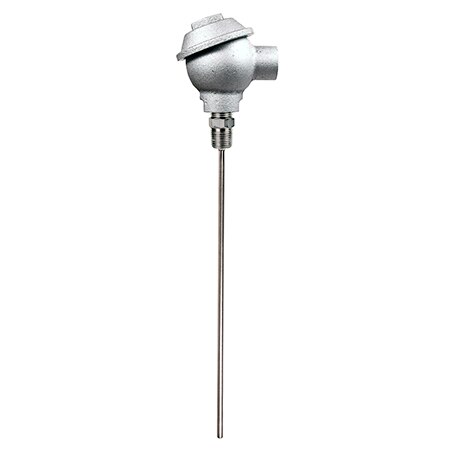Call us at 1-888-826-6342

| Quantity | Price each |
|---|---|
| 1-4 | C$197.53 |
| 5-9 | C$187.65 |
| 10-24 | C$183.70 |
| 25-49 | C$175.80 |
| 50-99 | C$171.85 |
| 100+ | C$167.90 |
Edit these specs to order a different model. Not all combinations are valid. Options compatible with previous selections will be in bold.
*Highlighted options are not compatible. Please select a different combination or click the CONFIGURE button to build your own.
Our PR-12 series probe with chemical-resistant cast iron protection head and screw-on cap includes PT100 Ω platinum RTD element or PT1000 RTD element, 1/2" NPT mounting threads and sheath of 316 stainless steel. When properly sized, these can go directly into and bottom out in a thermowell. All probes include a screw terminal block for easy connection of insulated copper extension wire. Replacement probes (without head assembly) are available as well as a "spring-loading" option which allows for the probe to bottom out in a thermowell for quicker and more accurate response. Inside dimensions for the cast iron head: Diameter: 2.2 inches; Height: 2.0 inches